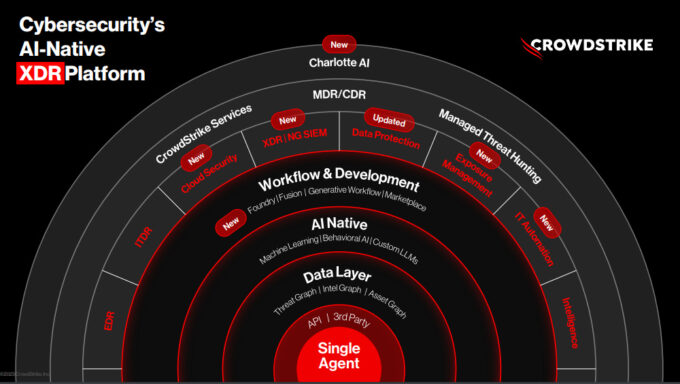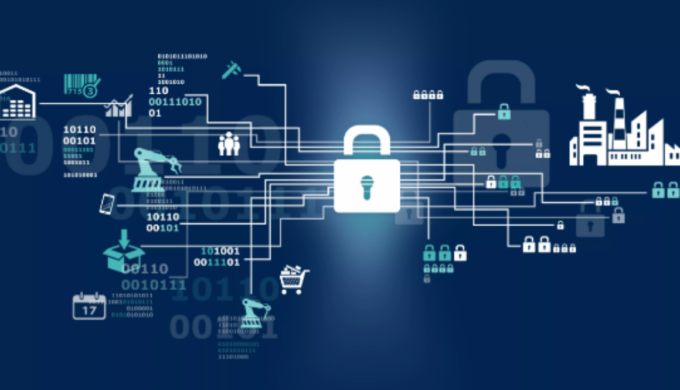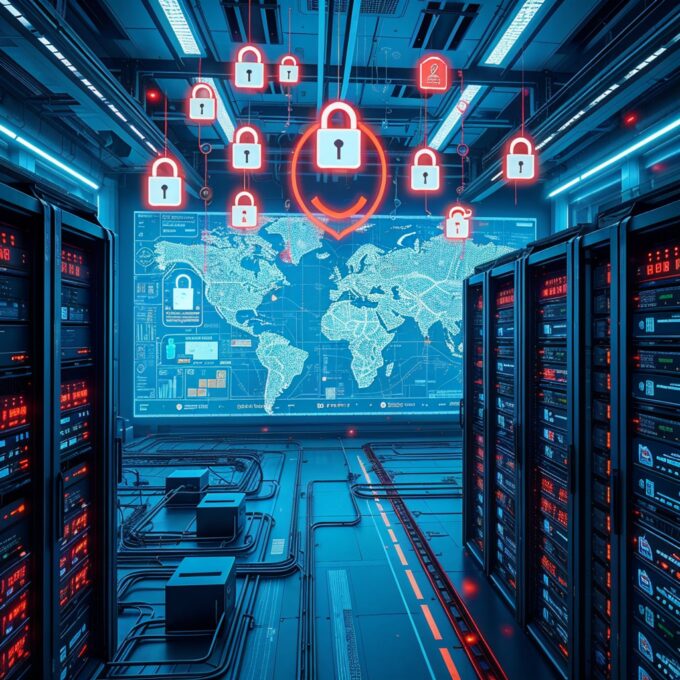The digital landscape of the 21st century is a double-edged sword. On one side, the integration of technology into nearly every facet of our lives has brought unprecedented convenience, efficiency, and connectivity. However, on the flip side, this deep interconnection has also introduced significant vulnerabilities, particularly when it comes to centralizing digital and cybersecurity infrastructure. The recent CrowdStrike outage serves as a stark reminder of the perils that come with centralization in this digital age.
Understanding Centralized Digital and Cybersecurity Infrastructure
Centralization refers to the consolidation of critical functions, processes, or services into a single, centralized system or organization. In the context of digital and cybersecurity infrastructure, centralization often means that a single entity or platform is responsible for managing a vast array of digital services, including data storage, cybersecurity, network management, and more. While centralization can offer efficiencies, it also concentrates risk, making such systems highly susceptible to disruptions.
The Appeal of Centralization
The move towards centralization in digital infrastructure is driven by several factors:
- Efficiency and Cost-Effectiveness: Centralized systems can reduce redundancy, lower operational costs, and streamline management processes. For organizations, this translates into less spending on multiple service providers and easier management of IT resources.
- Ease of Management: Centralized infrastructure simplifies the management of IT systems. For instance, having all cybersecurity protocols managed by a single entity or platform can make it easier to implement and monitor security measures.
- Interoperability and Integration: Centralized systems facilitate better integration of services, leading to more seamless user experiences. When different services are managed under one umbrella, it becomes easier to ensure that they work together effectively.
The Risks of Centralization
Despite its benefits, centralizing digital and cybersecurity infrastructure comes with significant risks, many of which have become more pronounced in recent years.
- Single Point of Failure: Perhaps the most glaring risk of centralization is the creation of a single point of failure. If a centralized system or platform experiences an outage, the impact can be widespread, affecting all the services that depend on it. This risk is exacerbated in cases where critical infrastructure—such as cybersecurity—is centralized. An attack or failure in the centralized system can expose vast amounts of data or leave numerous systems vulnerable.
- Target for Cyber Attacks: Centralized systems are prime targets for cyber attackers. When a single platform holds the keys to multiple systems, it becomes a highly attractive target. Hackers understand that breaching a centralized system can give them access to a treasure trove of sensitive information, or allow them to disrupt services on a large scale. This makes centralized systems not only more vulnerable but also more likely to be attacked.
- Reduced Resilience: In a decentralized system, if one component fails, others can continue to operate independently. However, in a centralized system, the failure of the central node can bring down the entire network. This reduced resilience makes it harder to recover from failures or attacks, leading to longer downtimes and more severe consequences.
- Increased Complexity in Recovery: When a centralized system fails, the recovery process can be complex and time-consuming. This is because the failure often impacts multiple services simultaneously, requiring coordinated recovery efforts across different areas. In contrast, decentralized systems may allow for isolated recovery efforts, which can be quicker and more straightforward.
The CrowdStrike Outage: A Case Study

The recent outage experienced by CrowdStrike, a leading cybersecurity firm, highlights the dangers of centralized digital infrastructure. CrowdStrike’s platform is central to the cybersecurity operations of numerous organizations, providing endpoint protection, threat intelligence, and more. However, on August 2025, a critical issue led to a significant outage, disrupting services for many of its clients.
Impact on Clients
The outage impacted a broad spectrum of organizations, including Fortune 500 companies, government agencies, and small businesses. For many of these clients, CrowdStrike is the backbone of their cybersecurity infrastructure. The disruption left them vulnerable to potential cyberattacks, as critical security functions like threat detection and response were unavailable during the outage.
Widespread Disruption
The centralized nature of CrowdStrike’s services meant that the outage had a cascading effect. Because many organizations rely on CrowdStrike for their cybersecurity needs, the disruption of its services led to widespread operational challenges. For instance, companies were unable to monitor and respond to potential threats, increasing the risk of breaches and data loss.
Long-Term Repercussions
While CrowdStrike was able to restore services after several hours, the outage underscored the long-term risks of relying too heavily on centralized platforms. Organizations are now re-evaluating their cybersecurity strategies, with some considering a move towards more decentralized approaches to mitigate the risks of future outages.
The Broader Implications of Centralization
The CrowdStrike incident is not an isolated case. Other examples, such as the 2020 SolarWinds hack and the 2021 Facebook outage, further illustrate the dangers of centralization. These incidents have had profound implications for businesses, governments, and individuals, emphasizing the need to rethink how digital infrastructure is designed and managed.
- SolarWinds Hack: The SolarWinds hack, one of the most significant cyber espionage campaigns in recent history, exploited the centralization of IT management software. Attackers compromised SolarWinds’ centralized platform, gaining access to numerous government and corporate networks worldwide. The hack exposed the dangers of centralizing IT management functions, particularly when they involve critical infrastructure.
- Facebook Outage: In October 2021, Facebook experienced a massive outage that lasted for several hours, disrupting not just Facebook itself, but also Instagram, WhatsApp, and other services under the Facebook umbrella. The outage highlighted the risks of centralizing multiple services under a single infrastructure. The failure of a core component led to a domino effect, taking down multiple services simultaneously.
Rethinking Digital Infrastructure: Towards Decentralization

The risks associated with centralizing digital and cybersecurity infrastructure are becoming increasingly apparent. As organizations and governments continue to navigate the complexities of the digital age, there is a growing recognition of the need to move towards more decentralized models.
- Decentralized Cybersecurity: Decentralizing cybersecurity functions can enhance resilience by ensuring that the failure or compromise of one component does not bring down the entire system. For example, organizations could use multiple cybersecurity vendors to avoid relying on a single platform. Additionally, decentralized systems can be designed to operate independently, reducing the risk of widespread disruption.
- Adopting Hybrid Models: A hybrid approach that combines centralized and decentralized elements can offer the best of both worlds. For instance, organizations can centralize certain non-critical functions for efficiency while decentralizing critical ones to enhance resilience. This approach allows organizations to maintain some of the benefits of centralization while mitigating its risks.
- Building Redundancies: Even in centralized systems, building redundancies can help mitigate risks. Organizations can implement backup systems, alternative data centers, and failover mechanisms to ensure that they can continue to operate in the event of a failure.
- Focus on Interoperability: Ensuring that different systems can work together seamlessly is critical in a decentralized environment. Organizations should prioritize interoperability when designing their digital infrastructure to ensure that decentralized components can communicate and collaborate effectively.
Conclusion
The centralization of digital and cybersecurity infrastructure offers undeniable benefits, but it also introduces significant risks. The CrowdStrike outage serves as a potent reminder of these dangers, illustrating how a failure in a centralized system can have widespread and far-reaching consequences. As the digital landscape continues to evolve, it is essential for organizations and governments to carefully consider their approach to digital infrastructure, balancing the need for efficiency with the imperative of resilience. Moving towards more decentralized models, building redundancies, and adopting hybrid approaches can help mitigate the risks of centralization and ensure that our digital infrastructure remains robust and secure in the face of future challenges.










